Includes per person per night:
- Accommodation
- Breakfast
4.56048385330266 of 5 Stars
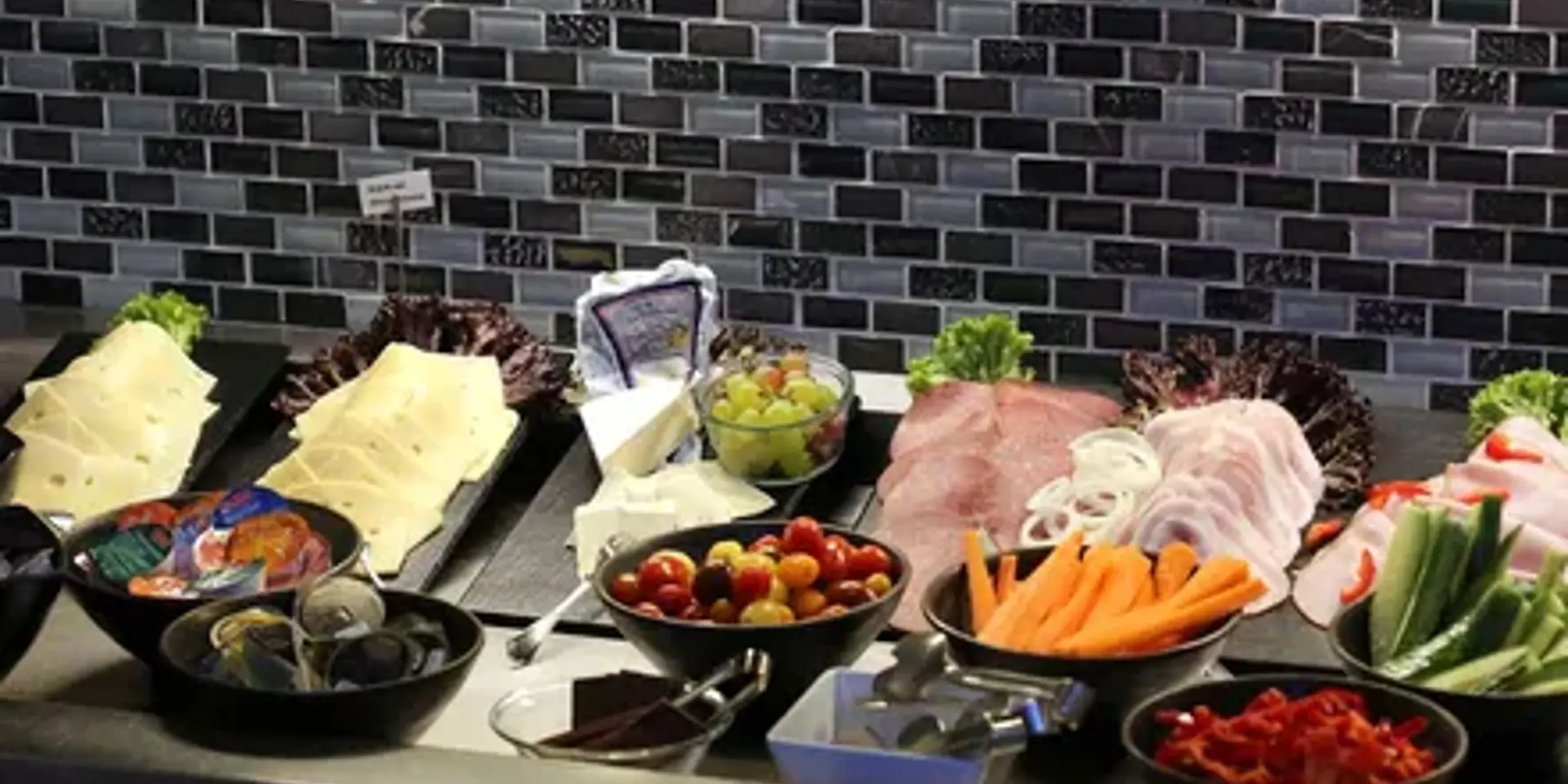
Includes per person per night:
Click the "See calendar and prices" button to choose dates and see the room selection.
See calendar and prices: Super StayBrorsonsvej 3, 2630 Taastrup
Show map

Arrival Fridays / 3 days / 2 nights
Includes per person:
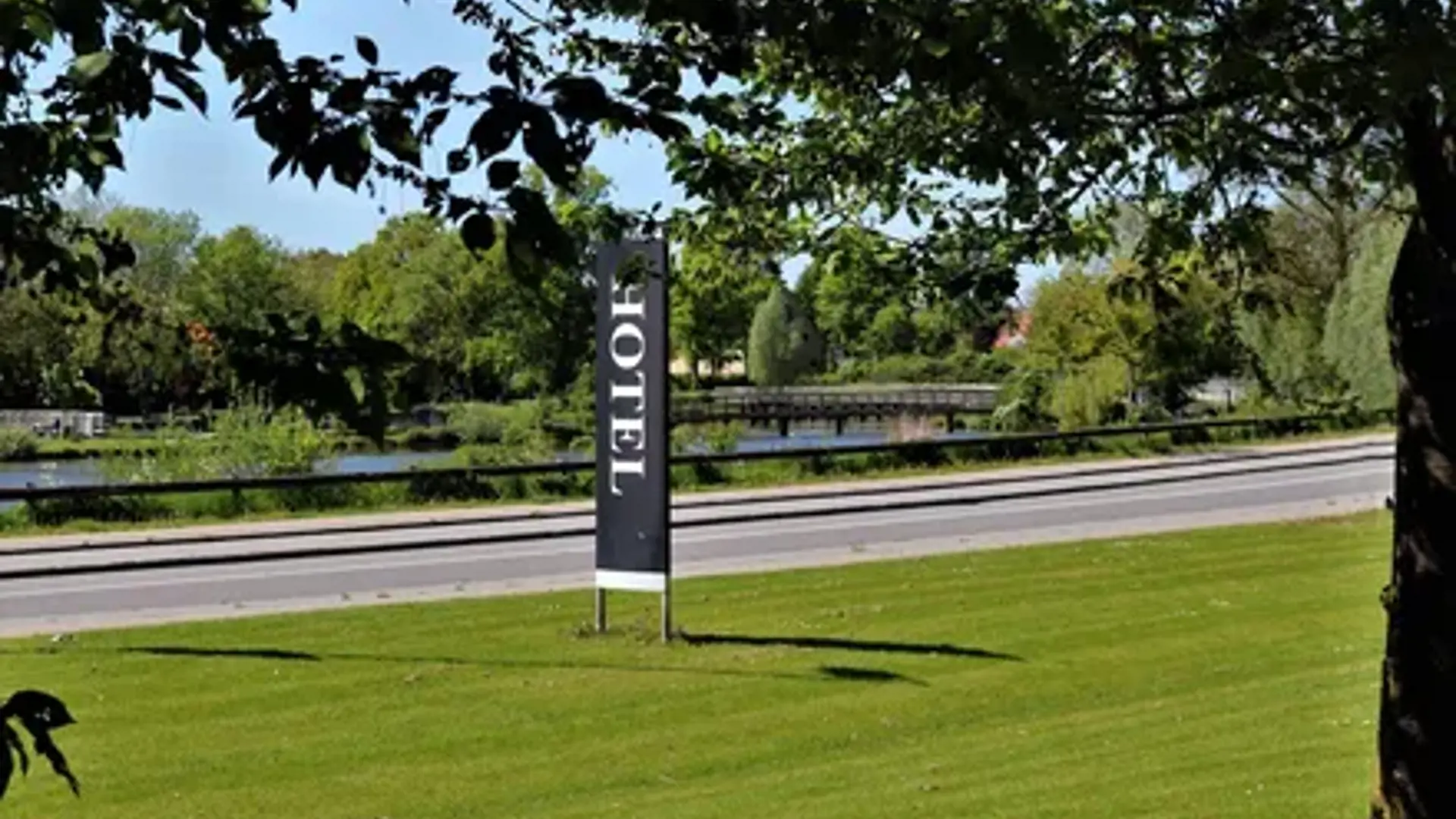
Book min. 2 days before arrival
Includes per person per night:

Oplevelsesgavekort med Produktid: 25010849
Inkluderer for 2 personer:
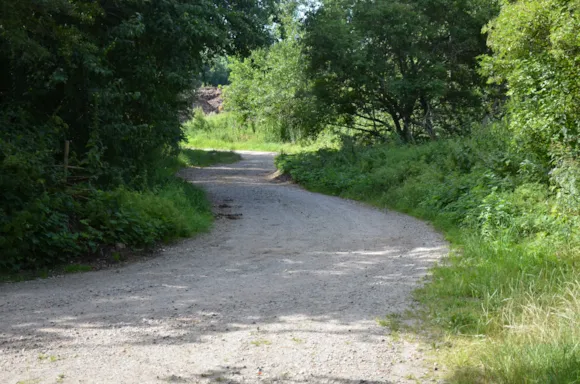
2.86 km
The unspoilt nature track from Strandparken to Hedeland is connecting the two largest open air areas of the Western Region.
By foot or bike, one can experience magnificent landscapes and wild nature.
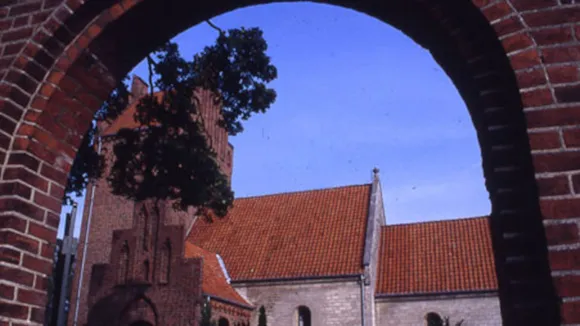
3.13 km
Ishøj Church is a typical village church, built c. 1100.
The pulpit, carved pews and the oldest bell date back from the Reformation period in 1620.
A very rare find was made in 1970 during restoration when a floor of glazed, delicately decorated medieval tiles were uncovered with substantial remains of an even older floor.
One of the floor patterns - lilies, hearts and a bird - is today used as logo for Ishøj Parish.
A replica of this tile has been built into the foundation stone for Vejleå church, providing
a link between the past and the present.
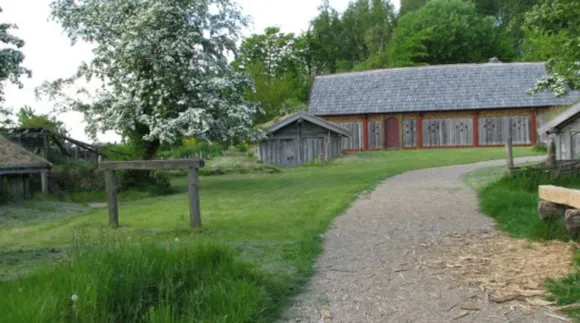
4.29 km
The Viking Village in Albertslund, just outside Copenhagen, is a historical place located with a beautiful view of Store Vejleådalen.
In the village, you will find three small houses and a unique farmhouse, Salshuset, which is richly coloured and decorated with hand carved objects and embroidered textiles.
The Viking Village keeps on building new things and in September 2001, it opened its new barn for the Viking keeping of animals
You can walk around in the Viking Village without any appointment but the houses are only open on special occasions.
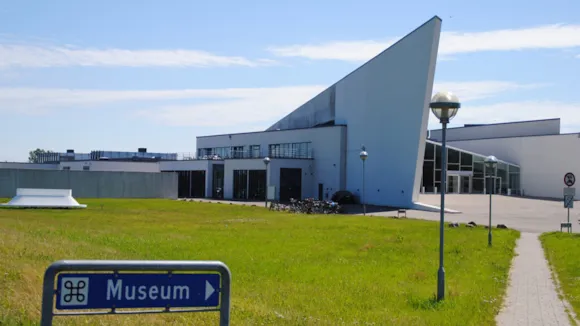
7.38 km
A highlight of Ishøj's development is Ishøj Beach Park, a recreational paradise just 15 minutes from central Copenhagen.
Ishøj beach park is an artificially created coastal environment. The work to make this park a reality in 1980 was immense, and included land reclamation, moving several million cubic metres of sand, digging lakes, making dunes and planting parks, building a harbour and constructing roads and paths. The result was marvellous with a scenic beach park covering about 5 square kilometres.
The place is visited by thousands of visitors every year who enjoy the man-made paradise and the pure bathing water. The coastline comprises a 7 km long beach running from Brøndby via Vallensbæk and Ishøj to Greve.
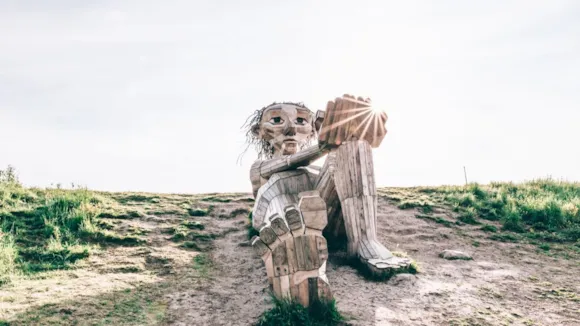
7.45 km
Go hunting for the six wooden giants (© Thomas Dambo) lurking in the woods of Copenhagen’s suburbs.
Scattered around lush forests, meadows, and by calm waters in suburbia Copenhagen, you'll meet the tall, quirky-looking wooden sculptures which are pretty far from your typical tourist attraction.
The six municipalities of the greater Copenhagen region which are homes to the impressive art pieces are definitely off the beaten track. And that's exactly why artist, Thomas Dambo opted for these scenic settings locations for his sculptures built from recycled woods; to get locals out discovering and enjoying nature. You are of course invited to do the same.
Perfect for families who want to go beyond the usual touristy sights and attractions to enjoy nature, finding your way to the giants is a fun activity for older kids. Especially if you or your kids like that treasure hunt feel.
A car is needed to get around, and you might want to consider combining your trip with a visit to Arken Museum of Modern Art which is close to the sculpture in coastal Ishøj.
Find the exact locations on the artist's website www.thomasdambo.com.

7.56 km
ARKEN is a great and monumental building situated in the artificial landscape, Køge Bay Beach, a short drive or train ride south of Copenhagen. With its collections, art exhibitions and architecture, ARKEN has won recognition both at home and abroad since its inauguration in 1996. You can experience one of Scandinavia's finest collections of contemporary art. Art which is about you, the life you live and the communities and societies of which you are a part. The museum also presents several different exhibitions each year with modern Danish, Nordic and international art, both the great classics and brand-new names. In spring 2016, ARKEN opened The Island of Art – a landscape of bridges, lagoons and dunes, welcoming visitors to a museum surrounded by water.
The museum building is an attraction in itself. The building – designed by architect Søren Robert Lund – with its pointed prow jutting out into the landscape, resembles a stranded ship a few meters from the water. The museum is located in scenic surroundings between Ishøj Harbour and the long sandy beach, so a visit to the museum is not complete without a walk along the dunes and beach.
On the side of the architect-designed museum building is ARKEN's café, where the beautiful nature flows in through large panoramic windows overlooking Køge Bay. In addition to the café, the building also houses the museum shop, which offers a mix of Nordic design, art books and delicious gift items.

9.64 km
The Circus Museum in Hvidovre is located in the former commandant’s building within the historic Avedørelejren complex, a decommissioned garrison that has become a vibrant cultural hub.
Since 2001, the museum has offered visitors of all ages a rich and imaginative journey into circus culture and history. It has been operated by Hvidovre Municipality since 2004.
At the heart of the museum lies the astonishing collection of Ølund “Barly” Jacobsen (1917–1999), a juggler, contortionist, and avid collector who amassed more than 100,000 items. These include photographs, posters, costumes, props, and other artifacts from the circus world.
The permanent exhibition is a colorful, immersive exploration of circus life. It is filled with film reels, glittering costumes, whimsical props, and vivid posters. Visitors can experience firsthand how imagination and spectacle define the circus.
The museum is also highly interactive. Every Sunday, Circus Fun takes place in the specially designed Fægtesalen. Under expert circus-artist guidance, visitors can try trapeze, juggling, tightrope walking, and more. In addition, creative workshops, children's treasure hunts, themed holiday events such as Halloween and carnival, school holiday performances, and even circus birthday parties are offered throughout the year.
In summary, the Circus Museum in Hvidovre is not only a repository of artifacts but also an active cultural hub. Whether you are a history lover, a family seeking fun, or simply curious about the magic behind the circus, the museum offers both depth and delight.
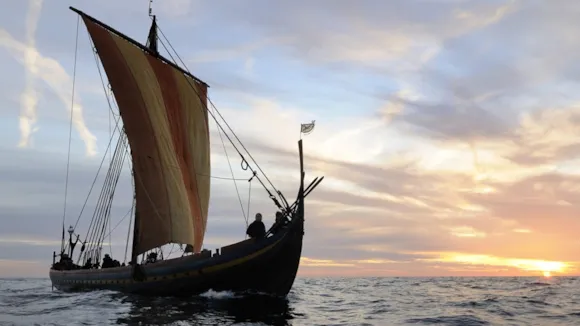
14 km
Delve into the fascinating seafaring life of the Vikings at the Viking Ship Museum in Roskilde – a unique museum showcasing five original Viking ships from the 11th century, dramatically displayed against the backdrop of Roskilde Fjord. The museum combines archaeology, authentic craftsmanship and vibrant storytelling to offer deep insight into Viking life, trade, warfare, and voyages to distant lands.
At the heart of the museum are the five Skuldelev ships, discovered in a blockade about 20 km north of Roskilde. This barrier was built to protect the city – then Denmark’s capital – from naval attacks. The permanent exhibitions tell the ships' stories: merchants sailing to faraway coasts, warriors embarking on raids, and fishermen casting their hopes into the waves of the fjord. The ships stand as majestic silhouettes, bearing witness to a life deeply connected to the sea.
The Viking Ship Hall is a highlight in itself. Built in 1969 as Denmark’s national museum for ships, seafaring, and boatbuilding in ancient and medieval times, it was designed by architect and professor Erik Christian Sørensen. The building was conceived as a giant display case surrounding the five original ships. With its distinctive brutalist style – raw concrete, exposed structures and panoramic windows – it stands today as an important example of Danish late modernist architecture.
Its split-level design allows visitors to view the ships in their entirety and appreciate the fine details. Vertical concrete fins filter the daylight, creating a dramatic contrast with the fjord. The hall was listed for preservation in 1997 due to its architectural value, though this was lifted in 2018 to allow future development.
Surrounding the hall, the museum’s outdoor area brings Viking history to life at full scale. At the centre lies the boatyard, where museum craftsmen reconstruct Viking ships and traditional wooden boats in full size. The scent of pine tar and the sound of axes striking oak create an authentic atmosphere. Visitors can observe the work and speak with boatbuilders who use the same techniques and materials as in the Viking Age.
Nearby, a hands-on area features maritime crafts, exhibitions and family-friendly activities. In summer, daily events include coin minting, jewellery making and shield painting – all with the chance to dress up and play Viking.
At Tunet – the Viking meeting place – specialists demonstrate crafts such as metalworking, woodcarving, and rope making. At the jetty, visitors can board a reconstructed Viking ship filled with trade goods and weapons – and let imagination sail back to an era when Denmark’s fate was forged at sea. A museum highlight is the Sea Stallion from Glendalough: in 2007–2008, this reconstructed Viking ship sailed all the way to Dublin and back, proving both Viking skill and modern craftsmanship.

14.1 km
Meet more than 4,000 fascinating animals at Copenhagen ZOO and travel between continents in just one day. You can also have churros by the chimps, ice cream by the polar bears, and lunch with a panda.
Get familiar with the iconic giant pandas while dining in the state-of-the-art Panda House. Experience unforgettable close encounters with polar bears and see the world from a giraffe’s perspective. Discover lots of animal facts and enjoy a meal from our grand selection of food stalls. ZOO is filled with explorations every day 365 days a year. A world to explore awaits.
Restaurants in Copenhagen Zoo
At Bistro Panpan, you can enjoy French dishes with an Asian twist at the Panda House. At Cakes & Dreams, you can enjoy delicious pastries. Spisehuset FOLK is a cozy and traditional restaurant serving classic, Danish food such as open sandwiches. All around the Zoo, there are snack stalls and stands where you can buy hot and cold drinks and ice creams.
Architecture at Copenhagen Zoo
The animals aren't the only thing to marvel at in the zoo. The zoo is also home to some architectural delights, not least the panda habitat designed by Bjarke Ingels Group, and the elephant house, designed by Norman Foster. Architecture fans might also enjoy looking at the Hippopotamus House, which opened in 2007 with walls patterned like a hippo's skin, and the Arctic Ring, which allows you to see the polar bears swimming under water.
Plan your visit here.

16.78 km
Just a two-minute walk from Copenhagen Central Station, Tivoli Gardens welcomes you into a world of wonder. Founded in 1843, it’s one of the world’s oldest amusement parks and a true Copenhagen icon. But Tivoli is much more than just rides. When you enter the gates, you’ll meet twinkling lights, the sweet scent of the garden flowers and stalls, and the sound of laughter. You can chase the thrills from the many rides, enjoy a peaceful stroll through the beautiful gardens, experience magical live performances like concerts, ballet and theatre, eat great food, and much more. This unique mix of atmosphere, charm, and variety keeps both locals and visitors coming back time and time again.
What makes Tivoli unique?
Tivoli is one of the world’s oldest amusement parks, and its rich history is felt throughout. It blends classic and modern rides with stunning gardens and a wide range of great dining experiences.
Is Tivoli family-friendly?
Absolutely. Tivoli offers gentle rides, playgrounds, seasonal shows, and plenty of family-friendly restaurants.
When is the best time to visit?
Summer evenings for outdoor concerts and dining; October for Halloween decorations; and December for the Christmas market and festive lights. Expect the most visitors on Fridays, Saturdays and Sundays.
Is it possible to get guided tours in Tivoli?
Guided tours are offered during select times of the year, while self-guided audio tours are available year-round. For details, visit the Tivoli website.
Are the rides open every season?
Yes, all the rides are open every season. However, if the weather is very windy or rainy, they will be temporarily closed.
Live performances in Tivoli:
Check Tivoli’s website to see which live performances are happening right now.
Tivoli transforms throughout the year with special decorations, markets, and events:
Tivoli isn’t just an amusement park – it’s part of Copenhagen’s cultural identity. Generations of Danes have grown up here, and millions of international visitors come every year to experience its unique blend of history, thrills, food, and atmosphere. Whether you’re riding the rollercoasters, dining in style, or simply wandering through the gardens, Tivoli promises memories that last a lifetime.
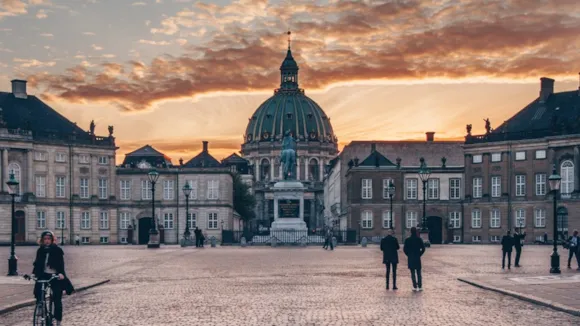
18.62 km
At Amalienborg Palace in the heart of Copenhagen, you can visit the seat of one of the world's oldest monarchies and go behind the scenes in a real royal palace. The palace is a must for anyone with a taste for royal history. Don't miss the palace square where you can watch the unforgettable changing of the guards.
Amalienborg is famous for its royal guard, known as The Royal Life Guard. Every day, you can watch the changing of the guards as they march from their barracks by Rosenborg Castle through the streets of Copenhagen to Amalienborg, often accompanied by music. The changing of the guard takes place at noon.
IMPORTANT: It is important that you place yourself appropriately on the square, so you don’t block or get too close to the marching guards. Please acquaint yourself with the geography of the square and position yourself in the green areas of the map. Also, it is not allowed to position yourself less than 1,5 meters from the palace buildings or take seat on the stairs.
Encircling the palace square, where the 1771 statue of King Frederik V stands, Amalienborg is composed of four architecturally identical buildings. These are Christian VII's Palace (also known as Moltke's Palace, used as a guest residence), Frederik VIII's Palace (also known as Brockdorff's Palace, home of His Majesty King Frederik X, Her Majesty Queen Mary, and their children), Christian IX's Palace (also known as Schack's Palace, home of Queen Margrethe II) and Christian VIII's Palace (also known as Levetzau's Palace, used as a guest palace for Prince Joachim and Princess Benedikte). It's in this building you'll find Amalienborg Museum.
A visit to Amalienborg Museum gives you access to the private interiors of the most recent kings and queens along with an exhibit on the monarchy today with its many traditions. It's a behind-the-scenes trip sure to delight any royal fans.
The scope of the museum stretches back 150 years to Christian IX and Queen Louise, who were known as "the in-laws of Europe" because four of their children ascended to the thrones of England, Greece, Russia, and Denmark.
The rooms of Christian IX, Queen Louise, and their descendants are still intact, so a visit is like a journey through time. Each room reflects the modern taste of its period and the personalities of the kings and queens, whether it is in military, Victorian, or knightly style.
TRAVEL TIP: With a Copenhagen Card in hand you get free admission to Amalienborg and over 80 attractions as well as free public transportation in the whole capital region.
The large garden room offers an insight into modern royal life and the monarchy in the 21st century. Royal life entails many duties and traditions, and there are plenty of opportunities to explore them and gain an understanding of what it means to be royal today.
On most days, there is admittance to the Gala Hall and the other magnificent rooms on the Piano Nobile. The royal reception rooms are still used by the royal family for representative purposes.